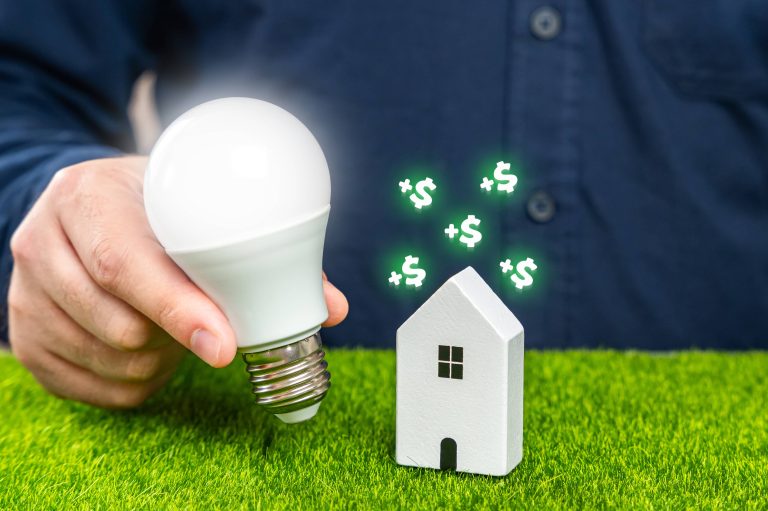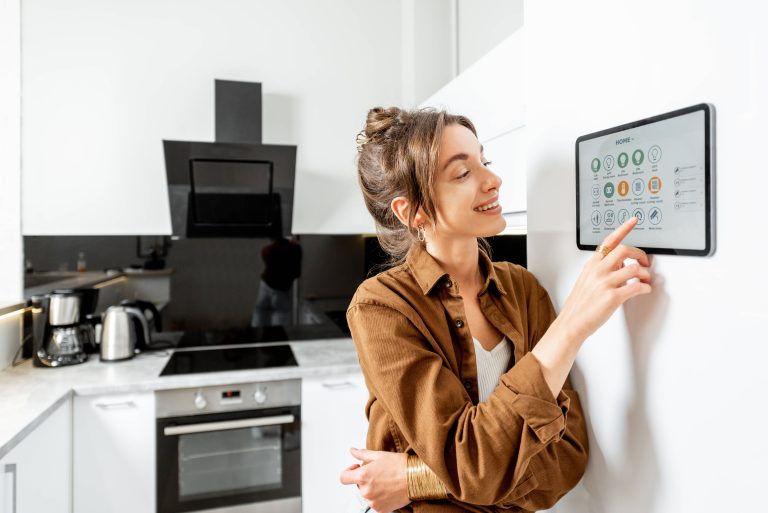
In an age where being frugal is nearly as important as being environmentally conscious, the concept of a smart home offers not just comfort and entertainment but also the potential to significantly reduce your energy bills. From intelligent thermostats to smart lighting and beyond, integrating smart technology into your home can lead to substantial savings. In this blog post, we’ll delve into the various ways a smart home can help you cut down on energy costs while enhancing your quality of living.
Intelligent Climate Control
One of the biggest drains on household energy is climate control—heating and cooling. Traditional thermostats maintain a constant temperature based on user settings, regardless of the time of day or whether anyone is actually home. Enter the smart thermostat.
Smart thermostats like the Nest Learning Thermostat, Ecobee, or Honeywell Home products can learn your schedule and preferences. They can automatically adjust the temperature when you’re asleep or away from home, thereby conserving energy. More advanced models are capable of integrating with smart-home ecosystems, allowing you to control your heating and cooling using voice commands or your smartphone. According to various studies, these smart thermostats can save users anywhere from 10% to 20% on heating and cooling costs annually.
Efficient Lighting Solutions
Lighting is another major area where smart home technology can make a difference. Traditional light bulbs consume more energy compared to smart LED bulbs. Smart lighting systems like those from Philips Hue, LIFX, or TP-Link not only consume less electricity but also offer advanced features that allow for greater efficiency.
These smart bulbs can be scheduled to turn off when not needed, dimmed to reduce power consumption, or triggered by motion sensors to operate only when a room is occupied. Integration with home assistants like Alexa, Google Home, or Apple’s HomeKit adds another layer of convenience, enabling voice control to manage your lighting effectively. According to Energy Star, switching to energy-efficient lighting can save the average household about $225 per year.
Smart Plugs and Power Strips
Many electronic devices continue to draw power even when they are turned off—a phenomenon known as “phantom load” or “vampire energy.” Smart plugs and power strips offer a straightforward solution to this issue. By using smart plugs, you can control individual devices remotely, setting schedules for when they should be on or off. Some advanced smart plugs can even monitor energy usage, providing you with valuable insights into your consumption patterns.
For instance, products like the Belkin WeMo Insight or TP-Link Kasa Smart Wi-Fi Plug allow you to manage your devices from your smartphone, reducing unnecessary power drain. Over time, these small adjustments can lead to noticeable savings on your annual energy bill.
Smart Appliances
Modern homes are increasingly incorporating smart appliances, which offer a twofold advantage: convenience and energy efficiency. Appliances like refrigerators, washing machines, and dishwashers from brands like Samsung, LG, and GE are now equipped with smart technology designed to optimize their performance while minimizing energy consumption.
For example, smart refrigerators can adjust their cooling cycles based on the time of day and how frequently they’re opened. Smart washing machines and dishwashers can be scheduled to run during off-peak hours when electricity rates are lower. Many of these appliances can be monitored and controlled through smartphone apps, providing you with updates and maintenance alerts to ensure they’re running as efficiently as possible.
Energy Management Systems
A comprehensive approach to reducing energy bills in a smart home involves the use of an energy management system (EMS). These systems take the guesswork out of energy efficiency by providing a holistic view of your household energy usage. Products like Sense or the Schneider Electric Wiser Energy System use sensors to monitor your home’s electricity consumption in real time. This data can be accessed through a mobile app, giving you insights into which devices are using the most energy and where you can make savings.
An EMS can also integrate with other smart devices in your home, creating an interconnected network that optimizes energy usage. For example, it can coordinate with your smart thermostat to reduce heating and cooling costs or manage your smart lighting and appliances more efficiently.
Solar Integration
While the initial investment in solar panels might be high, integrating solar energy with smart home technology can lead to even greater savings on your energy bill. Solar panels can be paired with smart home energy storage solutions like the Tesla Powerwall, allowing you to store excess energy generated during the day and use it during peak hours or at night.
Many smart home systems can also monitor solar panel performance and optimize energy usage to ensure maximum efficiency. This not only reduces reliance on grid electricity but also qualifies you for various green energy incentives and rebates.
Conclusion
The move towards smart home technology isn’t just about upgrading to the latest gadgets or adding more convenience to your daily life—it’s a step towards a more sustainable and cost-efficient lifestyle. By intelligently managing how your household consumes energy, smart home devices offer tangible savings on your energy bill without sacrificing comfort or functionality. So, as you consider your next home improvement project, think smart. Your wallet—and the planet—will thank you.







